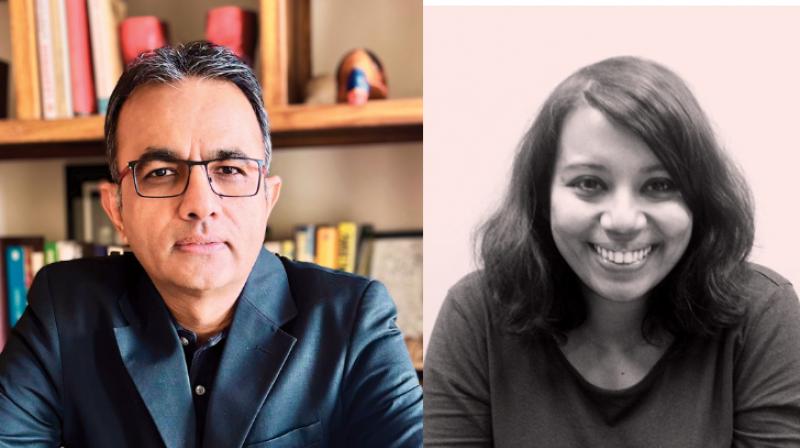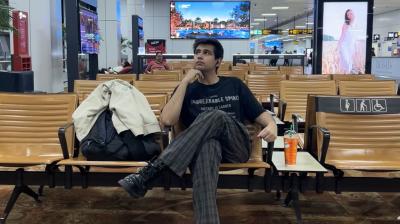The rules of advertising are being rewritten with legacy networks consolidating their ace agency brands closer to their chest, even as the independents cry foul on being ‘sidelined’ by the industry. As brands seek agility, speed, and cultural relevance, the eternal debate continues to hold sway: Do network agencies, with their scale and integrated capabilities, still have an edge? Or are independent agencies, known for their creative freedom and speed of execution, better equipped to meet the demands of the digital-first world?
Manifest weighs in on the debate, as Jitender Dabas, CEO, Cheil X, and Pallavi Chakravarti, founder and CCO, Fundamental, share their insights on what (agency model) it really takes to stay relevant, nimble, and effective in today’s ever-evolving media landscape.
Do network agencies have the agility to keep up with the always-on digital environment, or are they slowed down by systems?
Jitender Dabas (JD): Size is often blamed for sluggishness. But slowness isn’t a function of size — it’s a result of outdated structure, culture, and incentives.
Some networks are learning from start-ups — flattening hierarchies, embedding cross-functional teams, and rewiring their workflow around data and outcomes. Done right, scale can actually bring consistency, capability, and speed at scale.
In contrast, many independents look agile on the surface — but aren’t always digitally native or future-ready. Being small doesn’t mean you’re built for tomorrow. It just means you have fewer people — and sometimes fewer tools.
Pallavi Chakravarti (PC): ‘Today’s always-on digital environment’ as the reason why anyone is falling behind is a bit misleading. It doesn’t matter whether the environment is digital or analog. These same networks were around when the world moved from print to film. They adapted, didn’t they? They will adapt now. The problem lies with ownership.
Accountability and stewardship are media-agnostic. And systems where there are more warm bodies than accountable ones are the ones in which problems will inevitably arise. A network agency can be agile and an indie that is seeking to scale for the heck of it (read valuation) can become sluggish in a year or so. If your system, big or small, doesn’t have people and brains that clients rely on, things are going to get bumpy.
Do brands value deep, centralised brand stewardship that network agencies offer, or are they seeking the specialised, digital-first, fast-turnaround attention?
JD: This isn’t an either/or. The best brands today want both — long-view stewardship and agile execution.
Network agencies still offer unmatched experience when it comes to managing large, complex brand systems across markets and mediums. But that value erodes if not backed by faster, digitally-native delivery.
Independents often offer sharper attention, quicker turnaround, and closer founder-level involvement. But without the systems, scale or tech-stack to back it up, that speed can come at the cost of strategic coherence.
PC: Who has gone and declared that all independents promise only ‘digital-first’, ‘fast-turnaround’ as their mainstays? Fundamental doesn’t. For starters, we worry about the problem the client is coming to us with, not the medium. And if fast, faster, fastest is the criterion - well, then there will always be someone faster and cheaper. We’re neither, unfortunately, but we are good at what we do. In our opinion, brands value people who understand the big picture and can actually make a difference to both, their image and their bottomline. If a network agency can offer that, there’s no reason they shouldn’t find takers.
Can AI close the resource gap between networks and independents, or will it amplify it? Who stands to benefit more: networks with tech partnerships and R&D budgets, or independents with leaner, experimental mindsets?
JD: Technology is often called the great equaliser. In theory, AI gives small shops the firepower to punch above their weight. But that’s only half the story.
Technology is levelling — deployment is not. To truly benefit from AI, agencies need access to platforms, partnerships, training, and scale — all of which demand investment. And that’s where networks have the edge. With dedicated R&D, enterprise-level tech stacks, and ecosystem alliances, they’re positioned to integrate AI across the value chain — from insights to content creation to media optimisation.
We often equate independents with start-ups and assign them the virtue of agility. But real start-ups don’t just move fast — they’re also heavily funded to build, test, and scale. Most independents don’t have access to that kind of capital — especially not to invest in data infrastructure, AI tools, or talent development. And without that, agility can hit a ceiling.
PC: This is yet another false divide. Who isn’t deploying AI at the backend today? Networks are, as are indies. The usage straddles everything from category scans to consumer research to storyboards to pitch decks to synthetic respondents. AI competence is critical but it’s a means to an end, nothing more. Seeing it as an end versus a means negates the rising need for real, human connections. Anyone who can use AI to get more efficient and streamline processes will benefit - but it will come to naught, if we aren’t crystal clear about what makes humans tick.
What do recent consolidations and mergers within the network ecosystem signal about the future of agency models?
JD: Consolidation within networks reflects an effort to declutter and refocus—bringing capabilities closer under a single roof to offer more coherent, integrated solutions. It’s about simplifying the narrative and scaling efficiencies.
Brands are looking for fewer, more accountable partners who can think across the consumer journey — not a scattered bunch of specialists.
The future will be biased towards integrated, full-funnel ecosystems that can serve complex client needs under a single roof.
PC: We’re living in uncertain times. We see behemoths looking to get leaner, trimming the fat from here, there and everywhere. And we see smaller outfits looking to scale, fattening the goat, presumably eyeing the nearest interested buyer. Everyone is unfolding in the best way known to them at this moment in time - who are we to judge? Profitability is key to employee well-being and having a proposition that clients can see working for them and their businesses is critical. To us, nothing else matters. We’re staying far away from the scaling, the consolidating, the converging, the diverging, the merging, the acquisitioning and the whatnotting.
In the battle for top creative and tech talent, who has the edge - the resources and prestige of networks, or the creative culture and flexibility of independents?
JD: It’s tempting to frame this as a David vs Goliath battle — scrappy independents versus slow-moving giants. But that’s yesterday’s narrative. The real battle is collective survival in a changing ecosystem. The real question is: who is building the capability to stay relevant five years from now?
This is a collective battle for relevance. For survival in a world where technology is reshaping consumer journeys, client expectations, and creative production itself.
Because the future won’t be kind to those resting on either past prestige or perceived agility.
PC: Any organisation that pays well and on time, has appraisals and increments on time (and with arrears, in the case of delays), is clear about what it will and won’t do, has some sense of where it is headed and understands that work-life balance is more than a pretty slide on a company’s vision and mission deck has an edge. How many such outfits do you know of?
This first appeared in the July issue of Manifest. Get your copy here.












